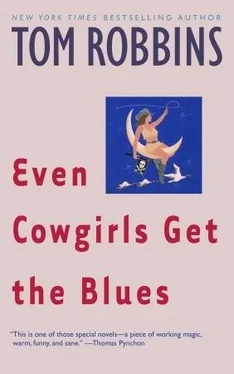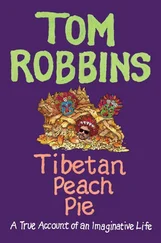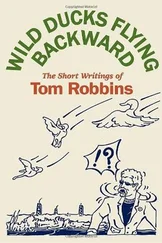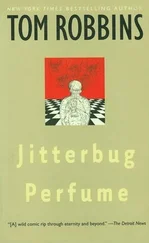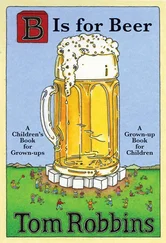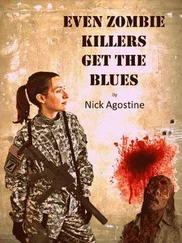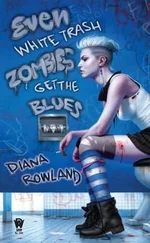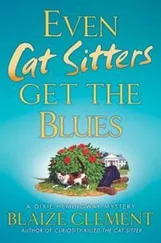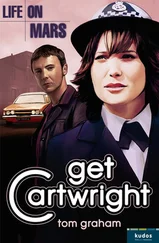Fortunately, the Chink knew which plants to chomp, which nuts and mushrooms to toast over tiny minimum-smoke fires. As best he could he patched his shoes with bark. His journey went well for a week or more. Then, out of the mysterious dwelling place of weather, there rode an abrupt and burly storm. For a while it toyed with him, blowing in his ears, aging his normally black hair, hanging flakes artfully from the tip of his nose. But the storm was on serious business, and soon the Chink, crouched though he was in the lee of a cliff, realized that, by comparison, the passion of this storm to storm made puny his own desire to reach Mexico. Snow snow snow snow snow snow. The last thing a person sees before he dies he will be obliged to carry with him through all the baggage rooms of lasting death. The Chink strained to squint a sequoia or at least a huckleberry bush, but all his freezing eyes saw was snow. And the snow wanted to lie atop him as badly as any male ever wanted to lie on female.
The storm had its way with him. He lost consciousness trying to think of God, but thinking instead of a radiant woman cooking yams.
Of course, he was rescued. He was rescued by the only people who possibly could have rescued him. He was discovered, hauled in, bedded down and thawed out by members of an American Indian culture that, for several reasons, cannot be identified beyond this fanciful description: the Clock People.
It is not easy, perhaps, to accept the fact of the Clock People's existence. You might read through every issue of National Geographic since the Year One and not find an exact parallel to the Clock People's particular distinctions. However, if you think about it for a while — the way Sissy did, the way the author has — it becomes obvious that the civilizing process has left pockets of vacuum that only Clock People could have filled.
60.
THE ROOM in which the fugitive regained consciousness was large and well heated, draped with crude blankets and the skins of animals. Whether it was a cave, a camouflaged cabin or an elaborate tipi/hogan-type dwelling the Chink would not say. He was careful not to disclose any details that might aid in pinpointing the location of his hosts. Sissy, moreover, would never have mentioned the Clock People to Dr. Robbins had she not been assured that conversation between psychiatrist and patient is privileged and confidential, immune, even, from governmental subpoena. That Dr. Robbins was someday to violate that privilege. . well, let's pass over that for now.
As had been written, the Clock People are of an American Indian culture. Ethnically speaking, however, they are not a tribe. Rather, they are a gathering of Indians from various tribes. They have lived together since 1906.
At the dawning of April 18, 1906, the city of San Francisco awakened to a terrible roar, mounting in intensity. For sixty-five seconds the city shook like a rubber meatball in the jaws of Teddy Roosevelt. There followed a silence almost as terrible as the roar. The heart of San Francisco lay in ruins. Buildings had tumbled into creviced streets; twisted bodies of humans and horses colored the rubble; gas hissed like the Snake of All Bad Dreams from dozens of broken mains. During the next three days, flames enveloped 490 blocks, unquenched by the teardrops of the homeless and lame.
History knows the catastrophe as the Great San Francisco Earthquake. That is not how the Clock People know it, but, then, the Clock People don't believe in earthquakes.
Among the crowds who watched the blazing devastation from surrounding hills was a scattering of American Indians. Largely from California tribes, though including folk from Nevada and Oregon, and in whose midst there moved representatives of the few but notorious Siwash, they were the first of the urbanized Indians. Poor, generally, they held jobs of menial or disreputable stature along the Barbary Coast (It should be emphasized, however, that they had been drawn into the city, each and every of them, not by desire for money — they needed no money where they came from — but by curiosity alone). The white San Franciscans camping on the smoky hilltops surveyed the ruins in a state of shock. Perhaps the Indians, too, were overwhelmed by the spectacle, but they, as always, appeared as inscrutable as the other side of a nickel. Yet the Indians were to display shock aplenty. It was when the fires were at last controlled and the citizens began to rush back into the still-warm ashes, singing, praising the Lord, and shouting to one another their plans for rebuilding their metropolis, that Indian eyes widened in disbelief. They simply could not comprehend what they were witnessing. They realized that the white man lacked wisdom, but was he completely goofy? Couldn't he read the largest and most lurid of signs? Even those Indians who had grown to trust the white man were grievously disappointed. Rebuild the city? They shook their heads and muttered.
For several weeks they remained on the hill, strangers united by shock and disappointment as well as by a common cultural comprehension of what had happened below. Then, through communications the nature of which is known best to them, several of the Indians led a migration of a small band of souls into the Sierras, where, in a period of thirteen full moons, they generated the stalk of a new culture. (Or, should we say, under their impetus, the ancient stalk of Life Religion put forth unexpected and portentous shoots.)
61.
ON BEHALF OF THE SUSQUEHANNA, the Winnebago, the Kickapoo, the Chickasaw, the Kwakiutl, the Potawatomi and all the other splendidly appellated aborigines who came to be labeled “Indians” through the ignorance of an Italian sailor with a taste for oranges, it is only fitting that “Indians” misnamed our Japanese-American hero “Chink."
There were very few Japanese in San Francisco in 1906, but Chinese were plentiful. Already there was a Chinatown, and its exotic trappings were a lure to tourists. Drugs, gambling and prostitution abounded in the Chinese quarter, just as they did on the Barbary Coast, and the Indians often had overheard their employers speaking of the competition from the “Chinks.”
In the years between 1906 and 1943, the Clock People had, naturally, discussed on many occasions the circumstances of their Sierra migration. More than once, they had wondered aloud why the yellow people had been so unenlightened as to join the whites in resurrecting San Francisco. It had been astonishing enough to watch the white man set about to repeat his mistake, but to watch the Orientals follow him. .!
Their curiosity about yellow men probably had influenced their decision to rescue this near-frozen outsider. During his days of recuperation, the storm victim had heard several of his hosts inquire about the condition of the “the Chink.” His sense of irony was not so frostbitten that he could refrain from perpetuating, once he had recovered, the misnomer.
Eventually, perhaps, he confessed to his Japanese ancestry. Certainly and soon, he confessed to being a fugitive. The Clock People elected to harbor him, and were never to regret it. In the years that followed, the Chink performed many services for them. In return, he was accepted as one of them, and gained privity to all of the secrets of the clockworks.
The pivotal function of the Clock People is the keeping and observing of the clockworks. The clockworks is a real thing. It is kept at the center, at the soul, of the Great Burrow.
The Great Burrow is a maze or labyrinthine sequence of tunnels, partly manmade, partly of geological origin. To be more specific: a natural network of narrow caves, lying beneath a large knoll in the Sierra wilderness, was lengthened and elaborated upon by the Indians who exiled themselves from San Francisco in 1906. Many, if not most, of the tunnels are deadends.
Читать дальше
